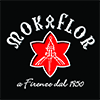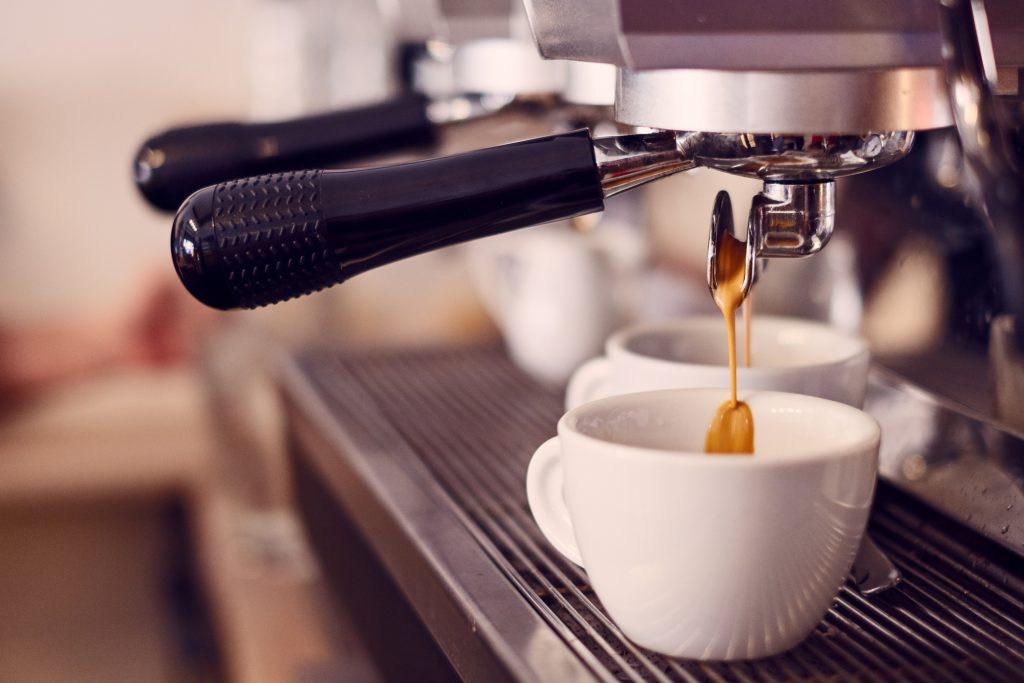The question is: automatic or lever? Boiler or exchanger? Here you’ll find all the answers to choose the best coffee machine for your bar!
Ok let’s face it, the espresso machine is the heart of a coffee bar. In many cases, if coffee is at the core of your business model, the espresso machine will be the greatest source of income. Or, on the other hand, it could drive sales given that coffee consumption can be very well combined to also selling pastries and other products.
Not only economically, but also aesthetically. The espresso machine attracts attention and creates visibility, especially if it’s of a good brand, quality and design.
This important machine, has to be chosen in the best possible way, considering that it will be a work tool and for which we will have to evaluate technological and aesthetic aspects.
Let’s start by evaluating some technological aspects that can guide us in choosing the best coffee machine for bars, thanks to this very interesting article from our partner blog aprireunbar.com, one of the most read online coffee magazines!
ESPRESSO MACHINE FOR A BAR: SHOULD IT BE MANUAL OR AUTOMATIC?
Choosing between a manual or an automatic espresso machine is a first and very important element, which is often underestimated.
There is quite a difference between the classic manual machines (which were the first to exist: the classic macchine “a leva” in Italian, or lever machines) and the more modern and technologically advanced automatic and semi-automatic machines.
The classic lever manual machine is a real gem and great object of design and quality. Nevertheless, it can be difficult to handle, needs a lot of attention and can sometimes even be a bit dangerous (more about the lever machines in a future article!)
If you aim to have many costumers and a high coffee consumption, we definitely recommend to go for a an automatic machine. Let’s find out here below, which are the differences between an automatic and a semi-automatic espresso machine.
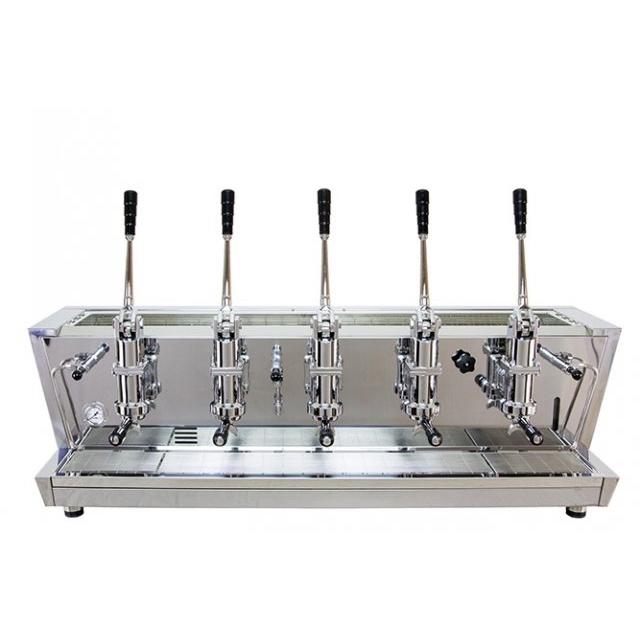
SEMI-AUTOMATIC ESPRESSO COFFEE MACHINES
To begin, let’s see how the semi-automatic coffee machine for bars, works. To understand this, just look at the control panel above the brew group: there is only one button.
You can press it to start and then press it again when it should stop, and when we think our espresso has reached the right amount inside of the cup. These machines have only one great advantage: the price, which is usually lower than the one of automatic machines. That said, however, they have two major drawbacks:
1 It’s necessary to thoroughly follow the extraction. You can’t be distracted while serving customers and need to follow the filling of the cup attentively until the extraction finishes.
2 The quality of extraction could be affected by the lack of precise control, due for example to the quantity of crema, which can vary with the level of freshness of the coffee. To correct this we should weigh the extraction, placing a scale under the cup and stopping the extraction when we reach double the weight of ground coffee we’ve used (did we use 7 grams? Then we should have 14 grams in the cup). This weighing operation can be strange for the beginner barista, but it is absolutely essential for the advanced barista, who works according to the SCA parameters.
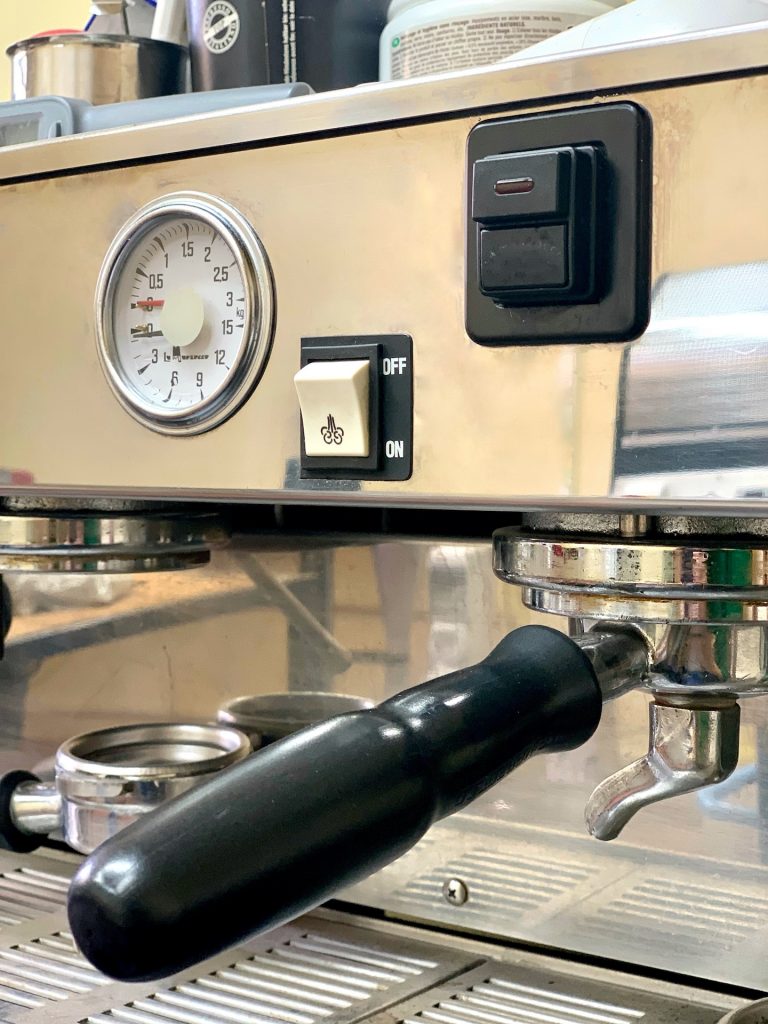
AUTOMATIC ESPRESSO COFFEE MACHINES
And how does the commercial automatic coffee machine work? Once again, we understand this by looking at the keypad where there will be several options: usually from 4 to 6 with an optional touch screen as well.
With these types of machines, we will be able to set the amount of water (the volume) that we will use for the extraction, thus always having the same weight in the cup.
The different buttons can be set to different amounts of water, for example for a single coffee, for two cups, for one long and one short and so forth.
Machines like these, stopping on their own, will allow us to serve several customers (and even be distracted) while the extraction is in progress.
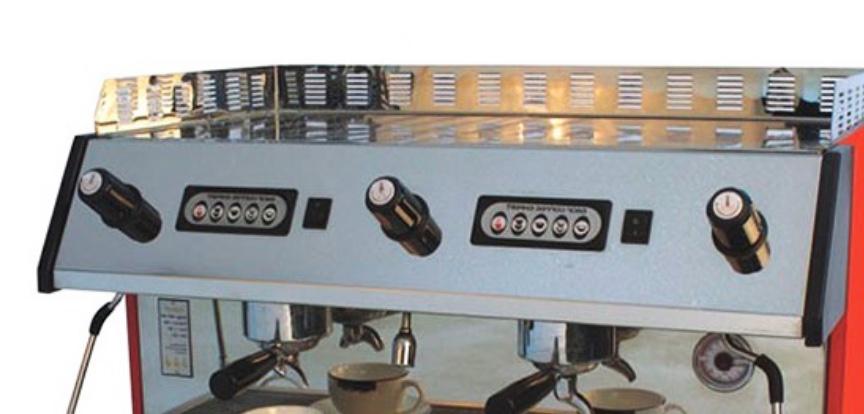
HOW MANY DISPENSING GROUPS SHOULD OUR ESPRESSO MACHINE HAVE? TWO OR THREE?
The “dispensing groups” are the number of arms of the coffee machine. If the budget allows it and its just a matter of choosing which, then we definitely always recommend: the more the better! It will allow you to make more coffees at the same time and is very beautiful to look at.
However, we would like to underline that most Italian bars consume about one / one and a half kilograms of coffee per day and for a consumption of this type (about 130/190 extractions per day) a two-group machine is more than enough.
HEAT EXCHANGER OR BOILER MACHINE?
Here we are with a slightly more technical question that needs some explanation.
Since around the 1960s, the espresso coffee machines have been built with an inside boiler filled with water at approximately 115/120 degrees (no. 7 in the diagram below, the one from which the steam is taken for the cappuccino). Various elements pass through this boiler in which water circulates and which reaches around 90/95 degrees. (No. 8).
These machines represent the vast majority but, especially in the world of specialty coffee, they are accused of having a certain thermal inconstancy, let’s say that they give the risk of extracting a espresso with a water temperature that is not always constant and optimal.

We are talking about maximum differences of 1 or 2 degrees which are usually imperceptible to the customer, but considered relevant for high level coffee extractions.
This is why in recent years machines built on a different technology have established themselves such as the espresso coffee machines with separate boilers. In this case, the steam boiler and the one for the espresso are separate, and the respective temperatures are not influenced, allowing extraction at a more constant temperature. As mentioned, these are minimal differences and often very linked to the quality of the coffee which used. If anything, they can be useful for the image of the place among a more specialized audience.
THE STOPWATCH
Here is a really useful and often underestimated tool. As many baristas know, an espresso should be extracted in a time range of 22 to 28 seconds (in accordance to the SCA parameters). To understand if our extraction is correct, we can start the stopwatch on our watch or smartphone or use a machine that, by pressing the start extraction button, automatically starts a stopwatch, which will stop by itself at the end of the extraction itself. This is really useful, trust us!

THE COOL TOUCH STEAMER
This is a small yet really useful option, in our opinion. Bartenders soon learn that with the steam wand, the one with which you froth the milk, you can easily burn yourself, perhaps by accidentally touching it. The “cool touch” lances are easily recognizable because they are much larger in diameter than normal ones, remain cold even during use, and we can handle them without fear and without burning ourselves!
